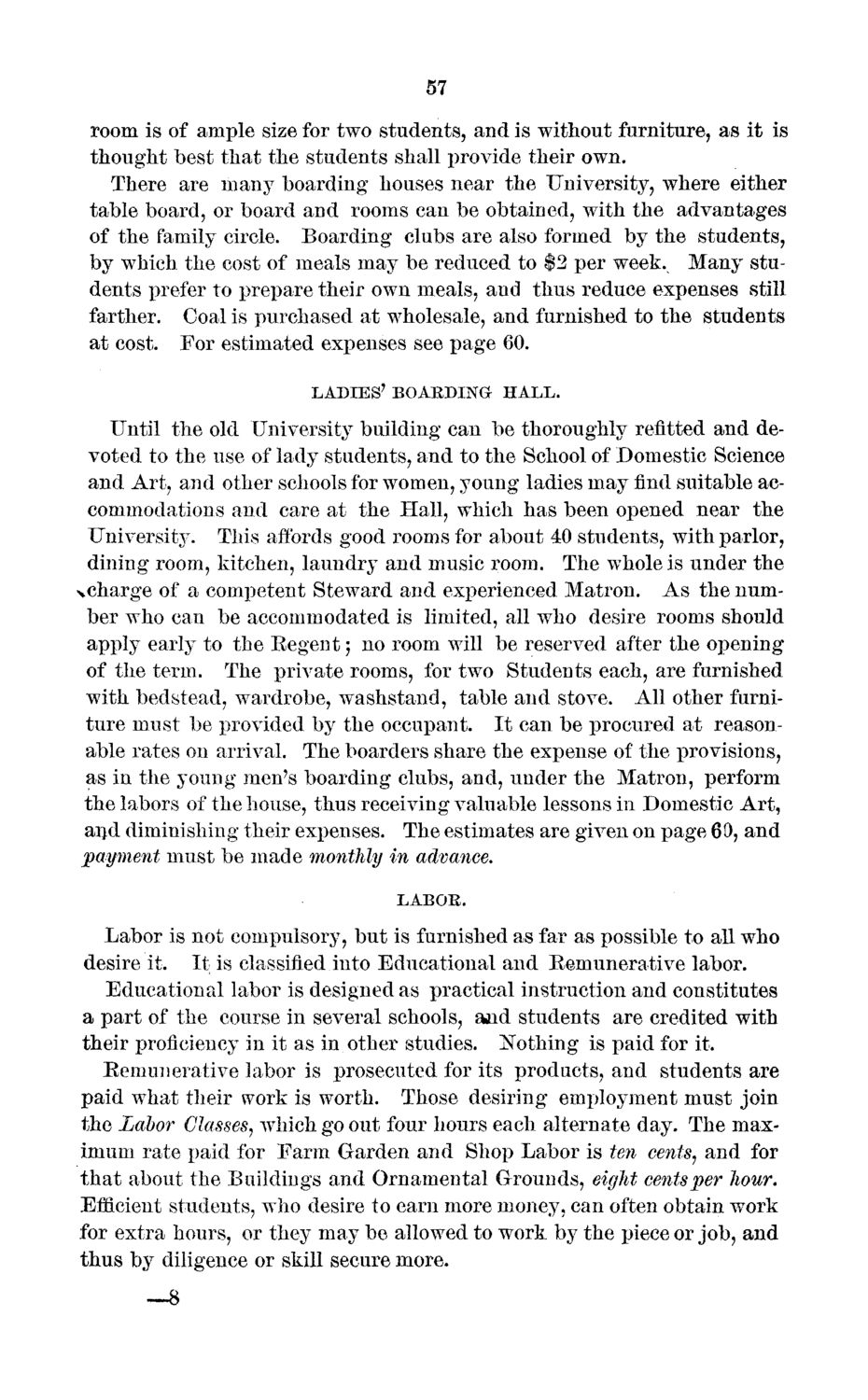| |
| |
Caption: Board of Trustees Minutes - 1873
This is a reduced-resolution page image for fast online browsing.

EXTRACTED TEXT FROM PAGE:
57 room is of ample size for two students, and is without furniture, as it is thought best that the students shall provide their own. There are many boarding houses near the University, where either table board, or board and rooms can be obtained, with the advantages of the family circle. Boarding clubs are also formed by the students, by which the cost of meals may be reduced to $2 per week. Many students prefer to prepare their own meals, and thus reduce expenses still farther. Goal is purchased at wholesale, and furnished to the students at cost. For estimated expenses see page 60. LADIES 7 BOARDING HALL. Until the old University building can be thoroughly refitted and devoted to the use of lady students, and to the School of Domestic Science and Art, and other schools for women, young ladies may find suitable accommodations and care at the Hall, which has been opened near the Universitj^. This affords good rooms for about 40 students, with parlor, dining room, kitchen, laundry and music room. The whole is under the vcharge of a competent Steward and experienced Matron. As the number who can be accommodated is limited, all who desire rooms should apply early to the Begent; no room will be reserved after the opening of the term. The private rooms, for two Students each, are furnished with bedstead, wardrobe, washstand, table and stove. All other furniture must be provided by the occupant. It can be procured at reasonable rates on arrival. The boarders share the expense of the provisions, as in the young men's boarding clubs, and, under the Matron, perform the labors of the house, thus receiving valuable lessons in Domestic Art, and diminishing their expenses. The estimates are given on page 60, and payment must be made monthly in advance. LABOR. Labor is not compulsory, but is furnished as far as possible to all who desire it. It is classified into Educational and Remunerative labor. Educational labor is designed as practical instruction and constitutes a part of the course in several schools, and students are credited with their proficiency in it as in other studies. Nothing is paid for it. Remunerative labor is prosecuted for its products, and students are paid what their work is worth. Those desiring employment must join the Labor Classes, which go out four hours each alternate day. The maximum rate paid for Earm Garden and Shop Labor is ten cents, and for that about the Buildings and Ornamental Grounds, eight cents per hour. Efficient students, who desire to earn more money, can often obtain work for extra hours, or they may be allowed to work by the piece or job, and thus by diligence or skill secure more. —8
| |